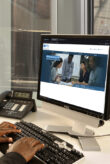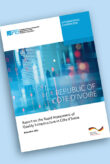Back in 2019, PTB released the Quality Infrastructure (QI) diagnostic and reform toolkit in cooperation with the World Bank Group. It consists of several elements, but the Rapid Diagnostic Tool (RDT) has proven to be the most popular. Since the beginning of this year, a practical User Guide has been available with tips on effectively applying the RDT.
The RDT is an Excel-based Rapid Diagnostic Tool that allows for a quick assessment of the state of a country’s QI. It covers areas such as the legal and institutional frameworks, administration and infrastructure, service delivery and technical competency external relations and recognition. The tool is made up of a series of questions that lead to quantitative answers. A specific value is assigned to the answer for each question, so that in the end all values can be summarized in a diagram. This can assist in deciding whether it is worthwhile to launch certain support activities or to conduct a comprehensive evaluation of the QI of a country.
Since its release, the RDT has been deployed in many different countries around the world. It has since become clear that both an update and a guide on using the application are necessary. The Covid-19 pandemic has accelerated the pace of digitization in all technical QI areas, and the willingness, acceptance, and technical capabilities of remote assessment in accreditation and certification have made tremendous strides. The RDT had to respond to this change. Therefore, seven international experts began work on the update in early 2022 and presented the results at a virtual event early this year with a total of 40 participants.
On this occasion, the User Guide to the RDT written by Ulrich Harmes-Liedtke and Christian Schön was also introduced. Aimed at consultants and project coordinators who work with this tool, the guide is intended to better coordinate the assessments of individual experts and to avoid excessive differences. It further seeks to help in the selection of institutions and interviewees, clarify issues of understanding that have arisen in specific areas of application, and provide information about the instruments that can complement the work with the RDT.
The participants of the virtual meeting held at the beginning of the year unanimously agree that it is expedient to regularly document user experiences with the RDT in order to identify where changes are needed. Therefore, such meetings for mutual exchange will continue in the future.
The current RDT in English can be downloaded here:
Ensuring Quality to Gain Access to Global Markets. A Reform Toolkit.
In French, the previous version is still available.
The User Guide to the RDT can be accessed here:
Quality Infrastructure Rapid Diagnostic Tool. User Guide.
Image © istock








